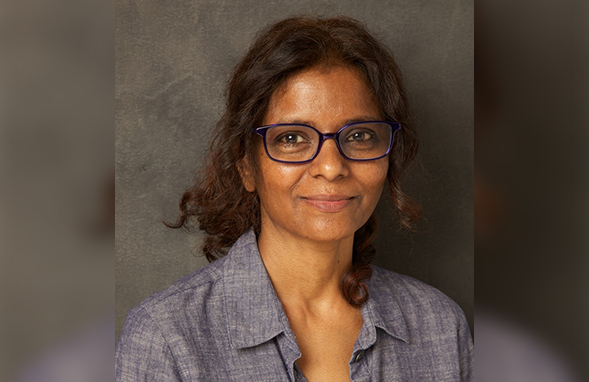
Winner of the Shakti Book Prize for 2018 for her memoir Ants Among Elephants: An Untouchable Family and the Making of Modern India, Dalit writer Sujatha Gidla has composed a moving and deeply relevant cultural classic on what it means to be of an Untouchable background in modern democratic India and the USA. In an interview she elaborates on her award-winning book and the experiences that motivated her to write.
- Could you tell us about your award-winning memoir Ants Among Elephants: An Untouchable Family and the Making of Modern India?
Ants Among Elephants is a family history based on what my mother Manjula and her brother — my uncle K.G. Satyamurthy — told me on taped interviews. In the book I tried to put my family’s stories in a historical context. Their stories also lent themselves very well for this. My uncle was one of the two founding members of the Peoples War Group, now known as the Maoists, operating in the tribal belt. However, before this transformation happened, my uncle was expelled because he questioned the rampant casteism within his own party. He is also one of the most famous Telugu poets. He wrote under the pen name Shivasagar.
My mother’s story is illustrative of women’s condition in India, especially employed women: she embodies how women have to cope with household work and the responsibility of raising children, along with work pressure. And the extra pressure in my mother’s case was also due to the fact that we are untouchables.
Both my mother and uncle are very good observers of society as well as storytellers. It took me almost a decade to do the interviews and the necessary research. It was published by Farrar, Strauss & Giroux in New York and later by Harper Collins in India, and by Daunt Books in the UK. It is also being translated into Chinese.
- Do you agree that caste, class and gender are interlinked, constituting an intersectional web of discrimination?
Yes. Inextricably. Caste was a special form of division of labour in the old village based on Indian agriculture. You can see this clearly from the fact that most caste names are simply names of different occupations. For example, the caste name Kummari in Andhra simply means ‘potter’, and the caste name Vadrangi translates as ‘carpenter’. Likewise barber, washerman, etc.
Even though that old system has been replaced by capitalist relations, caste persists and continues to play a role in the Indian economic system — if you see in agriculture, most of the manual labour is still done by untouchables. They are essentially the agricultural labourers. That is class: the rural working class.
As for gender, without gender oppression the caste system collapses. In other words, caste system is based on the control of women’s sexuality. You can see this in every single honour killing committed by Hindus (and in some cases, even by Muslims and Christians) in India. Caste affects women of ALL castes, not just untouchable, and ALL classes, not just poor women.
- Do you sense caste discrimination among the Indians (NRIs or Indian Americans) living in the USA? How does the system of caste reproduce in a foreign land?
Wherever there are Indians there is caste – except in countries where they went as indentured labourers.
Caste associations operate under the guise of immigrant cultural associations.
Take for example, Telugus here in America have TANA (Telugu Association of North America) and another one called NATA (North American Telugu Association) which reminds me of Monty Python’s Life of Brian with Judean Peoples Front and Peoples Front of Judea.
TANA is a Kamma caste association and NATA is for the Reddy caste. There is also the Telugu Brahmin Association which does not even disguise itself as an immigrant cultural group. Lower caste people and untouchables do not have associations because they do not want to be outed. In any case, who would want to declare their low social status for all the world to know?
Members of these associations help one another in businesses, jobs, residencies for doctor jobs, seats and faculty positions in universities. Caste is maintained in America also because these people have economic interests in India as well, like import-export, real estate, corporate hospitals, etc.
Children of first generation Indians can go either way. Some of them inherit their parents attitudes and others, because of their association with non-Indians at school or work, may not care about caste. There are also many liberal Indians in America.
- Which writer(s) do you count on for inspiration?
No one in particular comes to mind but it does not mean that no one inspired me, but there are some I like.
In Telugu, Dr Kesava Reddy, Rachakonda Viswanatha Sastry and Jayaprakash. In English, Haldor Laxness (for his Independent People), J.R.Ackerly (for his A Hindoo Holiday), Amanda Filipacchi (for her Love Creeps), and many others. Though unconsciously, I am sure my writing was undoubtedly influenced by many of these writers.
I especially like left-wing writers for their conviction. I read a book on the British Raj by Suneeti Kumar Ghosh (an early associate of my uncle K.G. Satyamurthy, immediately after the death of Charu Mazumdar), and I admire their zeal and activism, which inspires me also.








